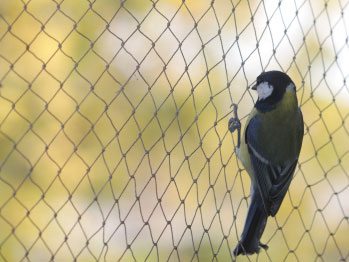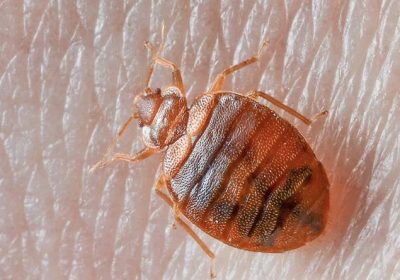The Legal Aspects of Bird Netting in Australia: Regulations and Best Practices
Imagine strolling through a lush vineyard in South Australia, enjoying the serenity, only to see a bird trapped in a poorly installed net. This unfortunate sight raises an important question: Are we balancing our needs with the welfare of our avian friends? Bird netting can be a humane solution to protect spaces like orchards, warehouses, and buildings from bird damage. However, improper use can cause significant harm and legal consequences.

Understanding the legal aspects and best practices of bird netting is crucial for anyone involved in its installation and maintenance. This article explores the regulatory landscape, ethical considerations, and practical tips to ensure that bird netting is both effective and humane.
Legal Framework Surrounding Bird Netting
Overview of Relevant Laws and Regulations
Bird netting in Australia is governed by various legal frameworks designed to protect bird species while allowing necessary human interventions. These regulations encompass federal, state, local, and even international laws.
Federal Laws (e.g., Environment Protection and Biodiversity Conservation Act)
In Australia, the Environment Protection and Biodiversity Conservation (EPBC) Act 1999 is a key federal law protecting native species, including birds. The EPBC Act makes it illegal to harm protected species without proper authorization. Violating this act can result in significant fines and penalties, underscoring the importance of understanding its implications when installing bird netting.
State and Local Regulations
State and local regulations complement federal laws, adding layers of protection and specific requirements. For example, in Victoria, the Wildlife Act 1975 provides additional protections for bird species. Each state may have different requirements, so it is essential to consult local wildlife agencies to ensure compliance.
International Regulations
Bird protection is a global concern, and international laws also play a role. For instance, the Convention on the Conservation of Migratory Species of Wild Animals (CMS), to which Australia is a party, aims to protect migratory species across their ranges. Understanding international regulations is crucial for businesses operating across borders or dealing with migratory birds.
Permits and Licenses
When Are They Required?
Permits and licenses are often required when dealing with protected bird species or installing netting in sensitive areas. These permits ensure that bird netting complies with all relevant legal and ethical standards.
How to Obtain Them
Obtaining a permit typically involves submitting an application to the relevant wildlife authority, detailing the purpose, location, and methods of bird netting. Consulting with legal experts or wildlife professionals can help navigate this process effectively.
Ethical Considerations and Animal Welfare
Importance of Humane Treatment of Birds
Humane treatment of birds is not just a legal obligation but a moral one. Birds play a vital role in our ecosystem, and it’s our responsibility to protect them from harm.
Guidelines for Ethical Bird Netting
Ethical bird netting involves using materials and methods that minimize harm to birds. For instance, choosing netting with the appropriate mesh size prevents birds from getting trapped. Additionally, regular inspections ensure that the netting remains in good condition and safe for birds.
Consequences of Violating Animal Welfare Laws
Violating animal welfare laws can lead to severe consequences, including fines, legal actions, and reputational damage. Ensuring that bird netting practices align with these laws protects both the birds and those responsible for the netting.
Best Practices for Bird Netting
Selection of Appropriate Netting Materials
Choosing the right netting material is crucial for effective and humane bird control. Netting should be durable, weather-resistant, and non-abrasive to birds.
Types of Bird Netting
- Polyethylene Netting: Durable and UV-resistant, suitable for long-term use.
- Polypropylene Netting: Lightweight and flexible, ideal for temporary installations.
- Knotted vs. Knotless Netting: Knotless netting reduces the risk of entanglement and is generally more bird-friendly.
Factors to Consider (Durability, Visibility, etc.)
When selecting bird netting, consider factors like durability, visibility, and the specific bird species you aim to deter. Transparent or camouflaged netting blends better with the environment and is less obtrusive.
Installation Techniques
Proper Installation to Avoid Harm
Proper installation is key to preventing harm to birds. Ensure that the netting is taut and securely anchored, with no loose edges where birds could become trapped. Installing netting at a safe distance from nesting sites further minimizes risks.
Maintenance and Inspection Routines
Regular maintenance and inspections are vital to ensure the netting remains effective and safe. Check for wear and tear, and repair or replace damaged sections promptly.
Alternatives to Bird Netting
While bird netting is effective, it’s not the only method available. Considering alternatives can provide a holistic approach to bird control.
Other Bird Control Methods
- Bird Spikes: Prevent birds from landing on surfaces.
- Audio Deterrents: Use sound to deter birds.
- Visual Deterrents: Scarecrows, reflective tapes, or predator decoys.
Pros and Cons of Each Method
Each bird control method has its advantages and disadvantages. For example, bird spikes are low maintenance but can be visually unappealing. Audio deterrents are effective but may cause noise pollution. Visual deterrents can work well initially but may lose effectiveness as birds get used to them.
Case Studies and Examples
Examples of Successful Bird Netting Implementations
Successful bird netting projects often involve comprehensive planning and adherence to best practices. For instance, a vineyard in South Australia used bird netting to protect their crops, resulting in reduced bird damage and no reported harm to the birds.
Lessons Learned from Failed Implementations
Conversely, failed implementations highlight the importance of proper installation and maintenance. A poorly installed netting in an urban area led to numerous bird entanglements and subsequent legal action, underscoring the need for professional guidance.
Legal Repercussions from Improper Use of Bird Netting
Improper use of bird netting can lead to significant legal repercussions. For example, a company was fined for installing netting that violated the EPBC Act, resulting in the death of several protected birds. Such cases emphasize the importance of complying with all legal and ethical standards.
Compliance and Enforcement
Monitoring and Ensuring Compliance with Regulations
Compliance with bird netting regulations requires ongoing monitoring and a proactive approach. Regular audits and assessments help identify and rectify potential issues before they escalate.
Role of Governmental and Non-Governmental Organizations
Both governmental and non-governmental organizations play crucial roles in enforcing bird netting regulations. Government agencies set and enforce laws, while NGOs often provide guidance, support, and advocacy for bird protection.
Penalties for Non-Compliance
Penalties for non-compliance with bird netting regulations can be severe, ranging from fines and legal actions to reputational damage. Ensuring adherence to regulations is not just a legal requirement but also a business imperative.
Reporting Violations
Reporting violations of bird netting regulations helps maintain ethical standards and protects bird populations. Most wildlife agencies have mechanisms for reporting violations, which can lead to investigations and corrective actions.
Conclusion
Summary of Key Points
Bird netting is a vital tool for managing bird populations and protecting human interests. However, it must be done within the framework of legal and ethical guidelines to ensure the safety and well-being of birds.
Importance of Legal and Ethical Bird Netting
Adhering to legal and ethical standards in bird netting practices not only protects birds but also shields individuals and businesses from legal repercussions. Responsible bird netting is a shared responsibility that benefits both wildlife and human activities.
Call to Action for Responsible Bird Netting Practices
Let’s commit to responsible bird netting practices by staying informed about regulations, choosing humane methods, and ensuring proper installation and maintenance. Together, we can create a harmonious coexistence with our avian neighbors.
Resources and Further Reading
List of Relevant Laws and Regulations
- Environment Protection and Biodiversity Conservation (EPBC) Act 1999: Link
- Wildlife Act 1975 (Victoria): Link
Contact Information for Regulatory Bodies
- Australian Department of Agriculture, Water and the Environment: Link
- Victoria Department of Environment, Land, Water and Planning: Link
FAQs
What is bird netting?
Bird netting is a method used to prevent birds from accessing specific areas, such as gardens, buildings, and agricultural fields, by installing physical barriers made of netting material.
Why is bird netting important?
Bird netting helps protect crops, buildings, and other areas from bird damage while ensuring that birds are not harmed.
What laws govern bird netting in Australia?
In Australia, the Environment Protection and Biodiversity Conservation (EPBC) Act is a key federal law. Additional state and local regulations, such as the Wildlife Act in Victoria, also apply.
Are permits required for bird netting?
Permits are often required when dealing with protected bird species or sensitive areas. It’s important to check with local wildlife authorities.
What are the ethical considerations for bird netting?
Ethical bird netting involves using humane methods and materials, ensuring proper installation and maintenance, and regularly inspecting the netting to prevent harm to birds.
What are some alternatives to bird netting?
Alternatives include bird spikes, audio deterrents, and visual deterrents. Each method has its pros and cons and should be chosen based on specific needs and conditions.
How can I ensure compliance with bird netting regulations?
Stay informed about relevant laws, obtain necessary permits, follow best practices for installation and maintenance, and conduct regular inspections.
What should I do if I see a violation of bird netting regulations?
Report the violation to the appropriate wildlife authority to help protect bird populations and maintain ethical standards.
By understanding and implementing the legal and ethical aspects of bird netting, we can achieve a balanced coexistence with our avian companions, protecting both their habitats and our interests.
Read more about Bird Netting
- Choosing the Right Bird Netting: A Comprehensive Guide
- Choosing the Right Bird Netting Material: A Comprehensive Guide
- Installation Techniques for Bird Netting: Step-by-Step Instructions
- The Environmental Impact of Bird Netting: Balancing Wildlife Protection and Human Needs
- Top Benefits of Using Bird Netting in Agriculture and Horticulture
- Common Mistakes to Avoid When Installing Bird Netting
- Innovative Bird Netting Solutions for Urban Areas
- Maintenance and Longevity of Bird Netting: Keeping Your Netting Effective
- Comparing Bird Netting with Other Bird Control Methods: Pros and Cons









